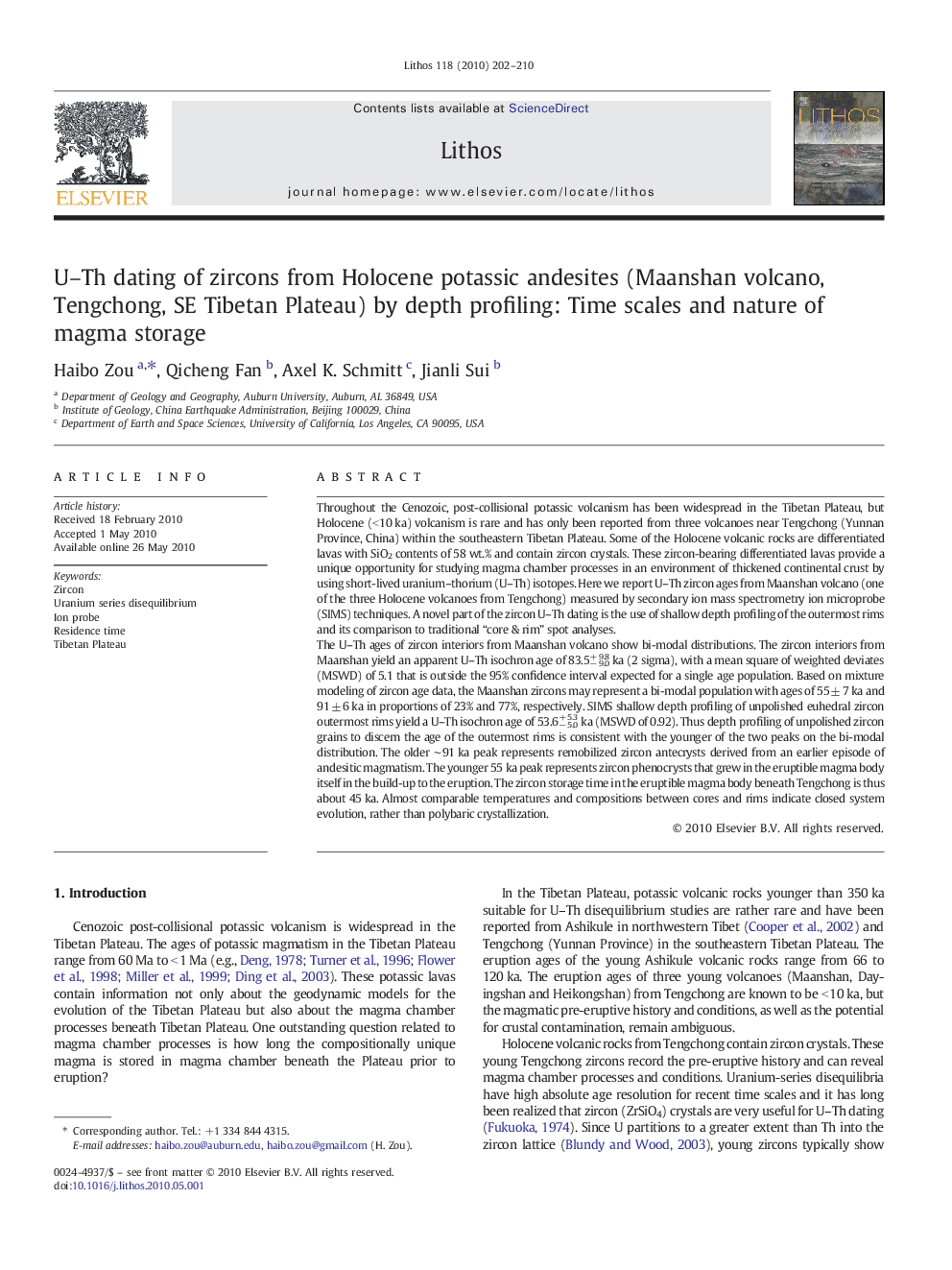| Article ID | Journal | Published Year | Pages | File Type |
|---|---|---|---|---|
| 4716839 | Lithos | 2010 | 9 Pages |
Throughout the Cenozoic, post-collisional potassic volcanism has been widespread in the Tibetan Plateau, but Holocene (< 10 ka) volcanism is rare and has only been reported from three volcanoes near Tengchong (Yunnan Province, China) within the southeastern Tibetan Plateau. Some of the Holocene volcanic rocks are differentiated lavas with SiO2 contents of 58 wt.% and contain zircon crystals. These zircon-bearing differentiated lavas provide a unique opportunity for studying magma chamber processes in an environment of thickened continental crust by using short-lived uranium–thorium (U–Th) isotopes. Here we report U–Th zircon ages from Maanshan volcano (one of the three Holocene volcanoes from Tengchong) measured by secondary ion mass spectrometry ion microprobe (SIMS) techniques. A novel part of the zircon U–Th dating is the use of shallow depth profiling of the outermost rims and its comparison to traditional “core & rim” spot analyses.The U–Th ages of zircon interiors from Maanshan volcano show bi-modal distributions. The zircon interiors from Maanshan yield an apparent U–Th isochron age of 83.5− 9.0+ 9.8 ka (2 sigma), with a mean square of weighted deviates (MSWD) of 5.1 that is outside the 95% confidence interval expected for a single age population. Based on mixture modeling of zircon age data, the Maanshan zircons may represent a bi-modal population with ages of 55 ± 7 ka and 91 ± 6 ka in proportions of 23% and 77%, respectively. SIMS shallow depth profiling of unpolished euhedral zircon outermost rims yield a U–Th isochron age of 53.6− 5.0+ 5.3 ka (MSWD of 0.92). Thus depth profiling of unpolished zircon grains to discern the age of the outermost rims is consistent with the younger of the two peaks on the bi-modal distribution. The older ∼ 91 ka peak represents remobilized zircon antecrysts derived from an earlier episode of andesitic magmatism. The younger 55 ka peak represents zircon phenocrysts that grew in the eruptible magma body itself in the build-up to the eruption. The zircon storage time in the eruptible magma body beneath Tengchong is thus about 45 ka. Almost comparable temperatures and compositions between cores and rims indicate closed system evolution, rather than polybaric crystallization.
